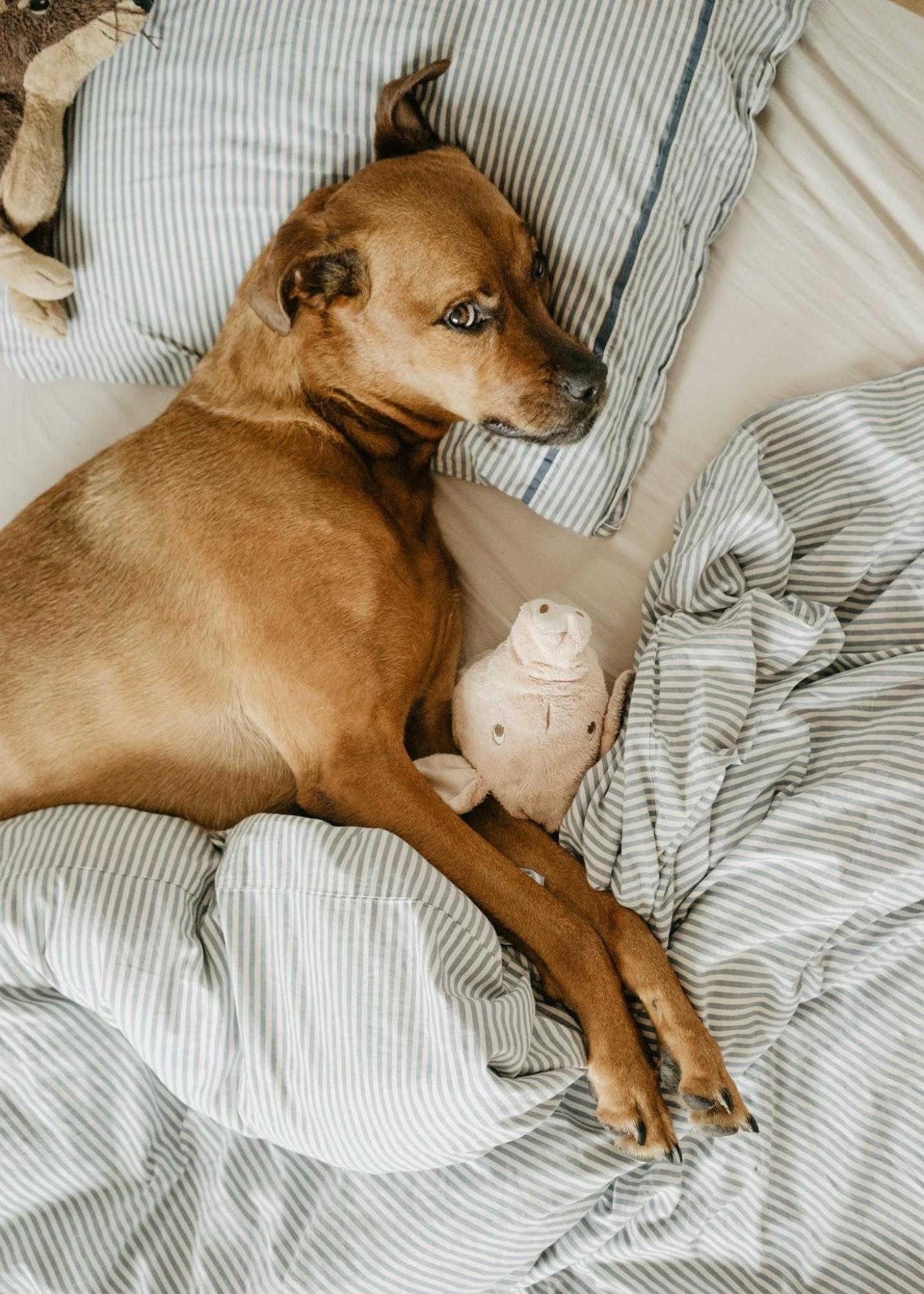Creating a dog-friendly space in your home is about more than just finding a place for your furry friend to sleep. It’s about designing an environment that promotes comfort, safety, and happiness for your dog while seamlessly fitting into your home’s design. Whether you have a small apartment or a spacious house, making your home more accommodating for your dog can improve their well-being and strengthen the bond you share. By following a few key steps, you can turn any area of your home into a safe, enjoyable, and functional space for your canine companion.
1. Designate a Cozy Sleeping Area
One of the first things you’ll need when creating a dog-friendly space is a designated area for your dog to rest and sleep. Dogs need a spot that is their own—a place where they can relax, feel secure, and escape from the hustle and bustle of everyday life. Choosing the right bed is essential, especially if you have a large breed. For example, providing your dog with comfort with a large dog bed ensures they have plenty of room to stretch out and rest comfortably. Place the bed in a quiet area of your home, away from heavy foot traffic or loud noises.
Dogs need a peaceful environment for rest, just like humans do. Ideally, this spot should be somewhere they feel safe and secure, such as a corner of the living room, near your bed in the bedroom, or in a cozy nook under the stairs. A large, plush dog bed with supportive materials like memory foam is a great option for older dogs or those with joint issues, as it provides extra comfort and helps relieve pressure points.
2. Create Safe Zones and Boundaries
It’s important to establish clear boundaries for your dog in your home, especially if there are certain areas that are off-limits, such as the kitchen or bedrooms. Creating safe zones can help manage your dog’s behavior and prevent accidents or damage to your home. For example, you can use baby gates or pet barriers to keep your dog away from certain areas without having to shut doors.
Make sure that the spaces your dog has access to are safe and free of hazards. Dogs are naturally curious and can easily get into trouble if dangerous items are left out in the open. Keep cleaning supplies, medications, and sharp objects stored away in cabinets or on high shelves. Secure loose wires and cords to prevent your dog from chewing on them, and make sure trash cans are out of reach to avoid accidental ingestion of harmful foods or objects.
If you have a backyard or patio, ensure that the outdoor area is secure and free of toxic plants or dangerous chemicals. Installing a sturdy fence will prevent your dog from escaping while keeping outdoor areas free of sharp tools or lawn equipment will reduce the risk of injury.
3. Provide Plenty of Mental and Physical Stimulation
Dogs need more than just a comfortable place to rest; they also need mental and physical stimulation to stay healthy and happy. Boredom can lead to destructive behavior, so it’s important to provide your dog with activities and toys that keep them engaged.
Consider setting up a toy station where your dog can access different types of toys, such as chew toys, puzzle toys, and interactive toys that challenge their minds. Rotating the toys every few days will keep things fresh and exciting for your dog. Additionally, setting aside space in your home for playtime can help your dog burn off energy, especially if you have limited access to outdoor spaces. A designated play area in a hallway, living room, or backyard can serve as a great spot for games of fetch or tug-of-war.
4. Incorporate Dog-Friendly Furniture and Flooring
If your dog is allowed on furniture, consider incorporating dog-friendly options that are both durable and comfortable. Choose materials that are easy to clean and resistant to stains, such as leather or microfiber. These fabrics are more forgiving of dirt, fur, and spills, making them ideal for homes with dogs. Additionally, using slipcovers or washable throws on couches and chairs can protect your furniture while still allowing your dog to relax comfortably.
Flooring is another important consideration. Hardwood floors, tiles, and vinyl are excellent options for homes with dogs because they are durable and easy to clean. Carpets, on the other hand, can trap pet hair and odors, and they may be prone to stains if your dog has an accident. If you prefer rugs, opt for machine-washable area rugs or runners that can easily be cleaned when necessary.

Creating a dog-friendly space in your home is about more than just providing a comfortable place for your dog to sleep—it’s about ensuring that your entire living environment meets your dog’s needs for safety, comfort, and stimulation. From offering comfort with a dog bed to organizing your pet’s essentials, making these small adjustments will help create a harmonious space where your dog can thrive.
By keeping your home clean, safe, and well-organized, you’ll not only improve your dog’s quality of life but also make your home a more enjoyable place for everyone. With thoughtful planning and a few simple changes, you can create a space that both you and your furry companion will love.

